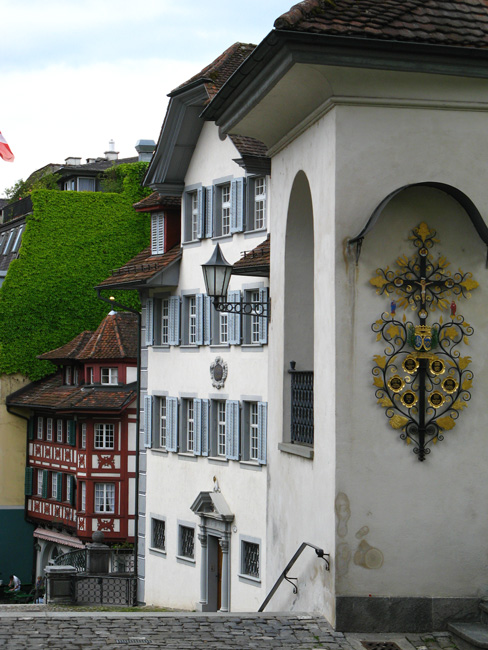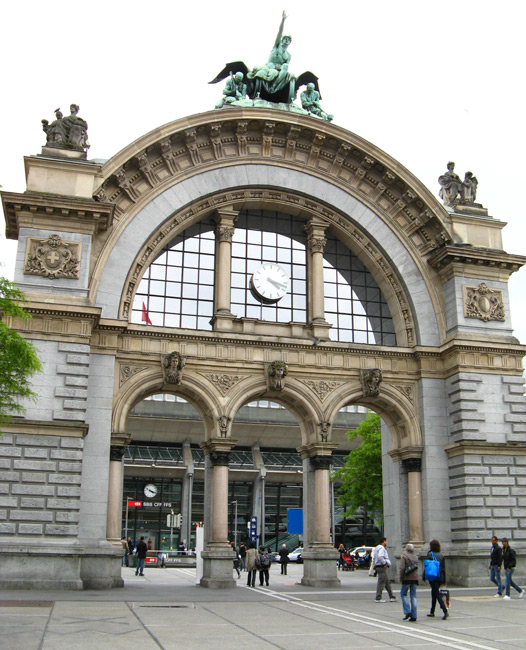
A short distance away is Lucerne’s most famous landmark, the Chapel Bridge:
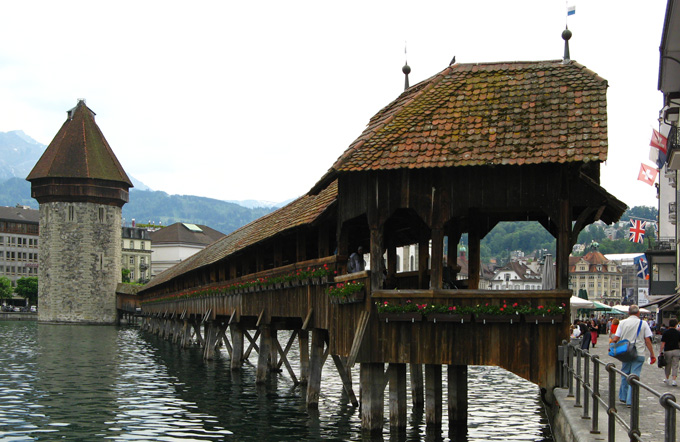
The “window” openings on this inner side of the bridge are larger than on the outer side where more cover was provided for defenders.
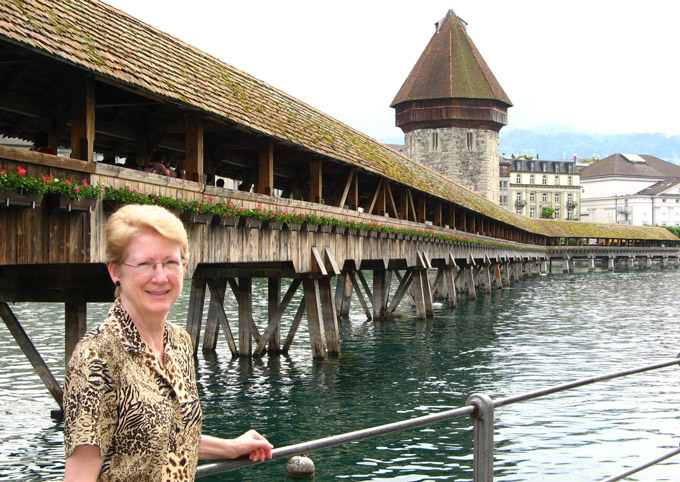
One section of the Chapel Bridge seems to point right at the Jesuit Church:
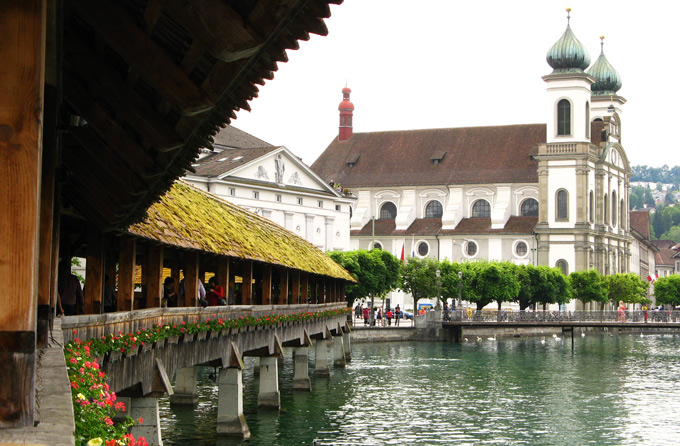
Completed in 1677, this was the first major Baroque church in Switzerland. It is dedicated to Francis Xavier, missionary to the Far East and founder of the Jesuit order:
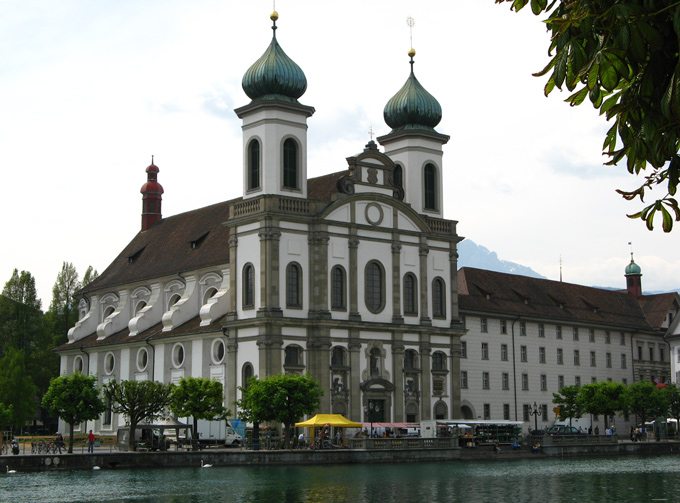
Though the interior seems to be covered in marble, that is an illusion, apparently. What appears to be marble, we read, is actually stucco made from ground-up marble laid on a wooden foundation. Could have fooled me!
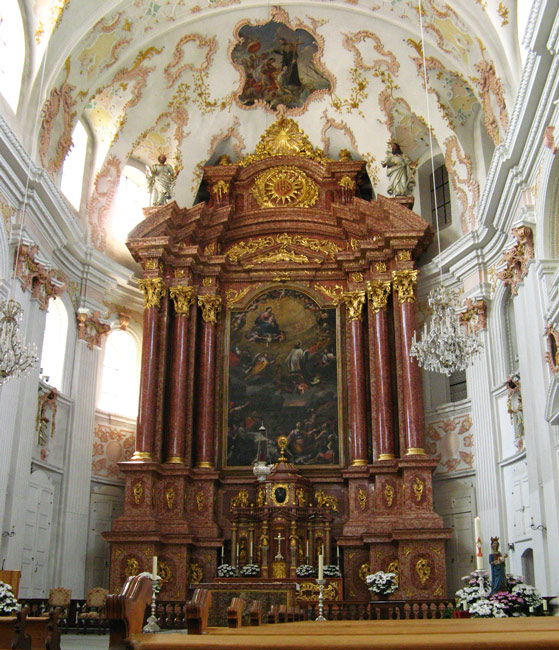
A bit farther downstream is the Mill Bridge, obviously refaced recently:
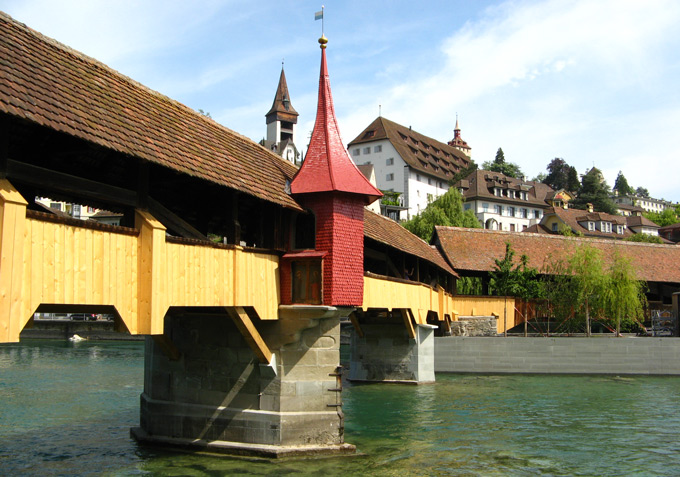
Crossing the Mill Bridge affords a chance to visually retrace our steps:
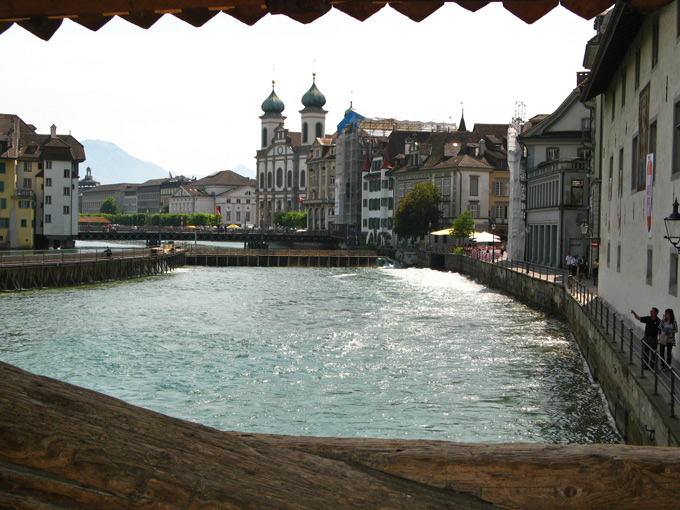
Parting company with the River Reuss, we strolled farther into the city. It was already lunchtime:
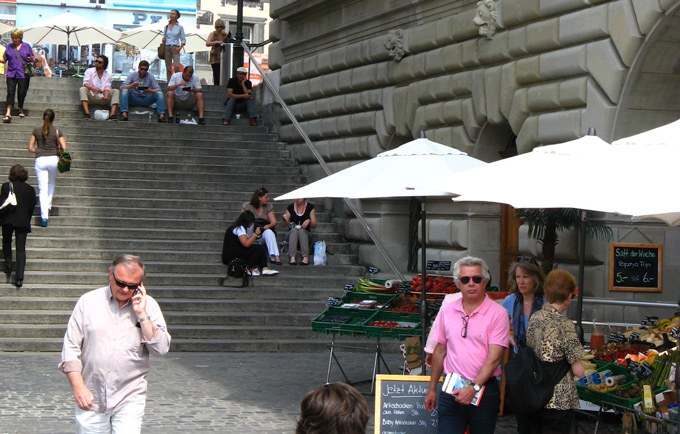
In Sternenplatz we admired this colorfully decorated restaurant:
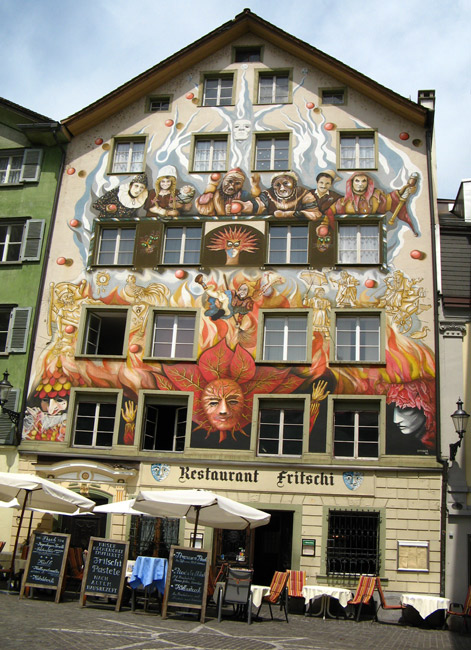
In the northeast part of Lucerne is Lowenplatz, center of tourism for 19th century visitors. Here, we entered the Bourbaki Panorama (an excellent depiction of a battle little known to Americans but “No photos, please!”), the Glacier Garden (a hodge-podge of exhibits we could have easily skipped) and, finally, the remarkable Lion Monument:
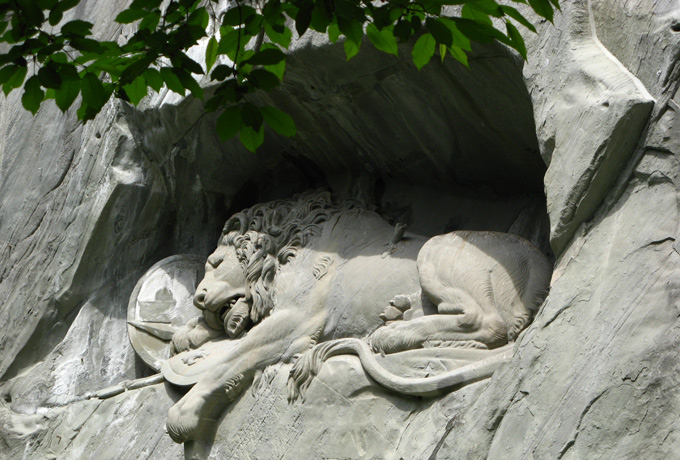
Paid for by public contributions and designed by Danish sculptor Bertel Thorvaldsen, it was hewn in 1820–21 by Lukas Ahorn in a former sandstone quarry. Before completing the monument, the artist was told that not enough money had been raised to pay for his services and that he would not be fully paid for his work. Wanting to make a public statement about his disdain for the situation, Thorvaldsen decided to reshape the niche housing his sculpture. The outside edge remains in the shape of a pig to this day --- a subtle but clear expression of his feelings.
Down Lowenstrasse on a small hill just above the lakefront is the Hofkirche, with its eye-catching, twin-needle towers:
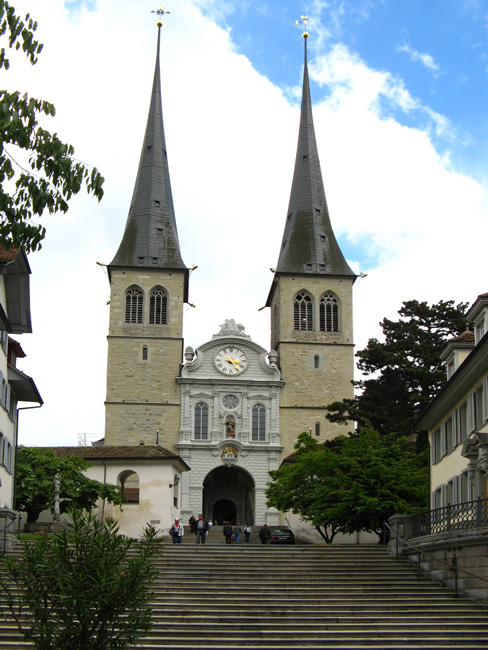
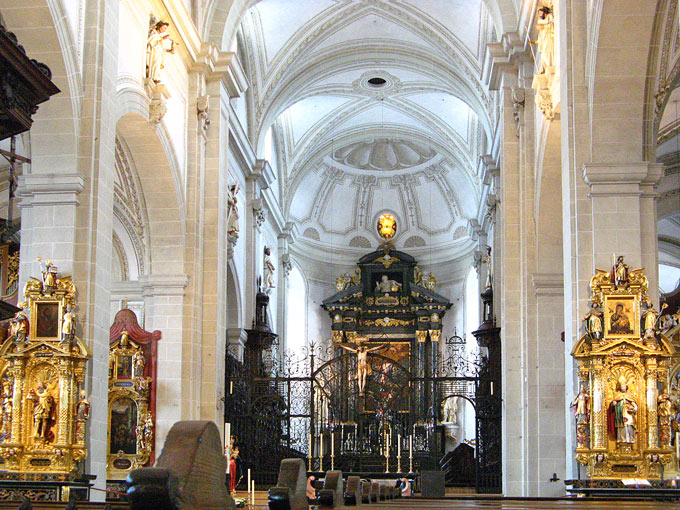
On the side of the church is this interesting sculpture of Jesus’ agony in the garden, well-protected from both weather and birds:

In Lucerne, medieval fragments of its past are tucked into sometimes surprising places, almost eliciting the question, “Where am I again?”
